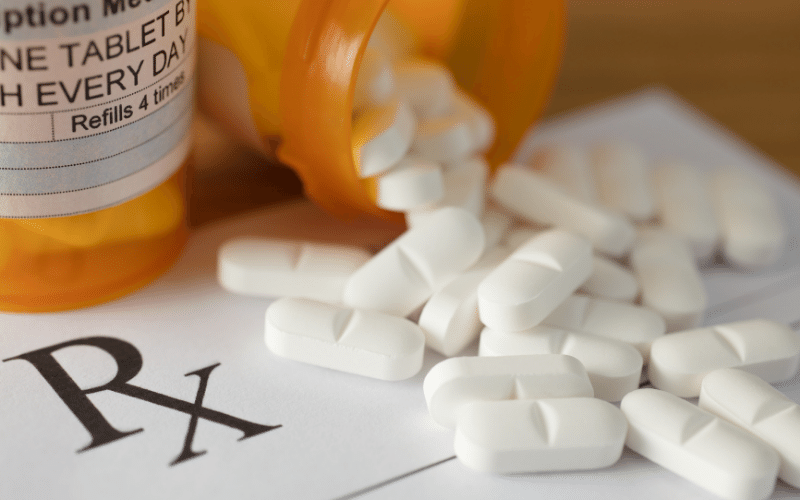Heroin, opioids, nicotine, and oxycodone are drugs most people can identify. But why isn’t anyone labeling alcohol as a drug? Maybe it’s because society has forever embraced alcohol as an acceptable substance. But, alcohol is a drug, no matter from what angle you look at it.
Is Alcohol Considered a Drug?
If we get technical, alcohol is a central nervous system depressant. It slows down brain function, neural activity and reduces the responsiveness of vital functions in the body – much like Valium or Xanax do. Still, alcohol isn’t labeled as these other drugs. However, besides being a depressant, alcohol is also known for its stimulant effects, depending on its amount. In small quantities, alcohol works as a stimulant, which are the effects most people are seeking when drinking alcohol. Depressant effects of alcohol
- Delayed reaction time
- Cognitive impairment
- Slurred speech
- Lack of motor skills
- Distorted perceptions
- Lessened inhibitions
- Distorted judgment
- Sedation
Stimulant effects of alcohol
- Talkativeness
- Overconfidence
- Improvements in mood
- Increased blood pressure
- Increased heart rate
- Overall feelings of euphoria
Interestingly, studies suggest people who experience a greater stimulant response after consuming alcohol are more likely to develop alcohol use disorder, also known as alcoholism.
Drug Classifications
Unfortunately, the US Drug Enforcement Administration (DEA) doesn’t include alcohol in its drug schedule categories. They classify drugs into five categories or schedules, depending on their potential for abuse and medical use.
Schedule I
These are drugs or chemicals with no accepted medical use and a high potential for abuse. Heroin, LSD, marijuana, and ecstasy are all Schedule I drugs. Technically, alcohol should fall here, right?
Schedule II
Substances and chemicals are considered drugs with a high potential for abuse and an increased risk for psychological and physical dependence. However, these drugs have accepted medical uses. OxyContin, Vicodin, Adderall, and fentanyl are all Schedule II drugs.
Schedule III
Drugs or other chemicals with a moderate to low potential for addiction. These substances have acceptable medical uses and have a lower risk of leading to dependence. Acetaminophen, codeine, and ketamine are all Schedule III drugs.
Schedule IV
These are drugs or chemicals with low potential for abuse or dependence. These have extensive medical uses under supervision. Xanax, Valium, Ambien, and Ativan are all Schedule IV drugs.
Schedule V
Drugs or chemicals with very low potential for abuse or addiction. These are not as controlled and do have medical uses. Robitussin, Motofen, and Lyrica are all Schedule V drugs.
What Makes Alcohol So Addictive?
First of all, alcohol is one of the few “acceptable” drugs in our society. Someone is less likely to receive social backlash for consuming alcohol than other drugs. At least 85% of people ages 18 and older report drinking alcohol at some point in their lifetime.
As of 2019, nearly 15 million people ages 12 and older had an alcohol use disorder.
Alcohol is physically and psychologically addictive. Drinking alcohol releases endorphins and dopamine, both responsible for euphoric sensations and feelings of pleasure. Over time, this release of hormones causes physical changes in the brain’s chemistry and functioning. When the brain reward and pleasure centers become overloaded with dopamine when someone consumes alcohol, it triggers cravings and withdrawal symptoms that cause someone to repeat or continue drinking. Brain scans show the impact of chronic alcohol use, confirming cell damage in the brains of alcoholics. Excessive drinking can damage the frontal lobe of the brain, which is responsible for executive function and decision-making. On the other hand, alcohol is psychologically addictive because it turns into a learned behavior that affects people’s thoughts and beliefs. Since many alcohol users turn to drink as a coping mechanism for anxiety, stress, depression, and other mental health disorders, it becomes a vicious cycle.
The Real Dangers of Alcohol
Almost 88,000 people die from alcohol-related causes every year. In addition to death, long-time alcohol users can struggle with cancer, liver disease, heart disease, and fetal damage. Not to mention, it also increases the risk of injuries, violence, suicide, and accidents. Alcohol consumption is the third-leading cause of accidental death in the United States. Alcohol poses a slight risk when used recreationally and in low doses. However, in large quantities, especially when binge drinking, there are many risks associated with alcohol. Alcohol overdose, or alcohol poisoning, occurs when the central nervous system starts to shut down, which can result in:
- Unconsciousness
- Inability to feel pain
- Toxicity
- Slow breathing
- Vomiting
- Respiratory depression
- Death
Besides these short-term risks, there are some responses caused by regular overconsumption of alcohol. Chronic and long-term alcohol abuse and alcoholism can have many health risks, including:
- Memory loss
- Difficulty learning
- Alcoholic hepatitis
- Liver disease
- Liver damage
- Fatty liver
- High blood pressure
- Various forms of cancer
- Stroke
- Thiamine or vitamin C deficiency
Considering Alcohol a Drug Can Help Save Lives
Despite the addiction to alcohol rising every year, federal officials seem reluctant to classify alcohol as a drug. It seems the news and law enforcement easily demonize drug abuse of bath salts or Vicodin. Still, alcohol remains accepted, despite being the third-leading cause of accidental deaths in the country.
Approximately 261 people die from excessive alcohol use every day.
Yet, alcohol brands are free to advertise as they please on virtually every channel. Alcohol remains accepted by society; there’s no stigma associated with drinking alcohol. Still, studies suggest non-drinkers are regarded with suspicion by other drinkers. In fact, a quick Google search will yield thousands of results with articles explaining “why you shouldn’t trust people that don’t drink,” with some of them listing numerous reasons to back this atrocious claim. Thankfully, about 30% of American adults willingly choose not to drink, according to the National Epidemiological Survey on Alcohol and Related Conditions.
Treating Alcohol as a Drug
Perhaps, if more people treated alcohol as drug addiction, the moment someone starts displaying symptoms of alcohol abuse, it would be easier to offer them help. If you or someone you know struggles with alcohol misuse or addiction, please know there’s help available. Today, reach out to Lighthouse Recovery Institute to start a free assessment and find out the best course of treatment. Alcoholism is a deadly disease, but there’s an addiction treatment program available that’s evidence-based and highly effective, so you can finally find the right path to recovery. [learn_more caption=”Sources:”] Sources: https://www.ncbi.nlm.nih.gov/pmc/articles/PMC2770186/ SAMHSA, Center for Behavioral Health Statistics and Quality. 2019 National Survey on Drug Use and Health. Table 2.18B – Alcohol Use in Past Year among Persons Aged 12 or Older, by Age Group and Demographic Characteristics: Percentages, 2018 and 2019. https://www.samhsa.gov/data/sites/default/files/reports/rpt29394/NSDUHDetailedTabs2019/NSDUHDetTabsSect2pe2019.htm#tab2-18b SAMHSA, Center for Behavioral Health Statistics and Quality. 2019 National Survey on Drug Use and Health. Table 5.4A – Alcohol Use Disorder in Past Year among Persons Aged 12 or Older, by Age Group and Demographic Characteristics: Numbers in Thousands, 2018 and 2019. https://www.samhsa.gov/data/sites/default/files/reports/rpt29394/NSDUHDetailedTabs2019/NSDUHDetTabsSect5pe2019.htm#tab5-4a [/learn_more]









